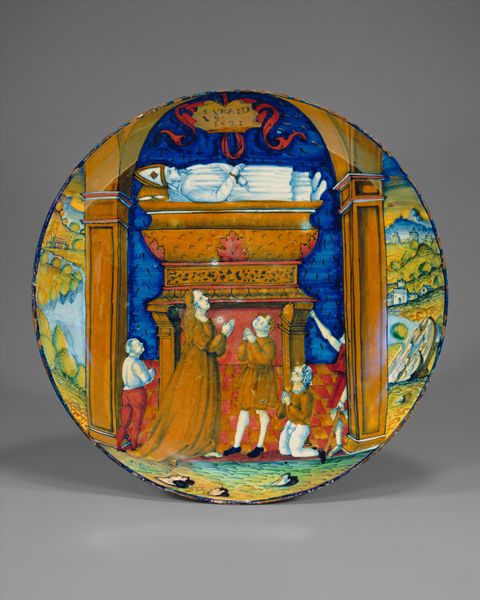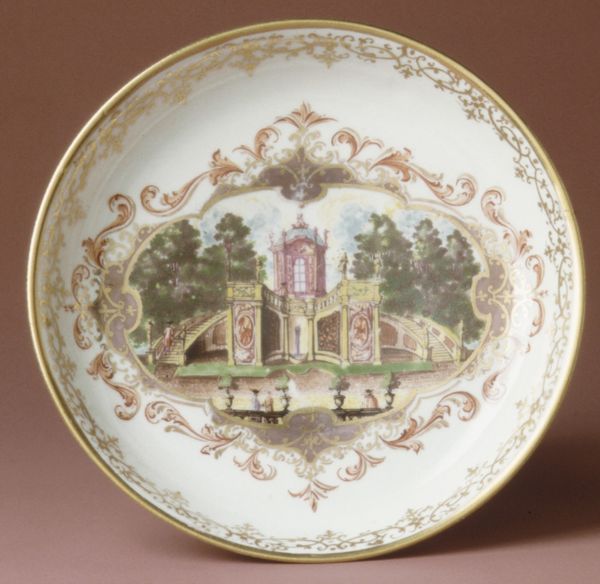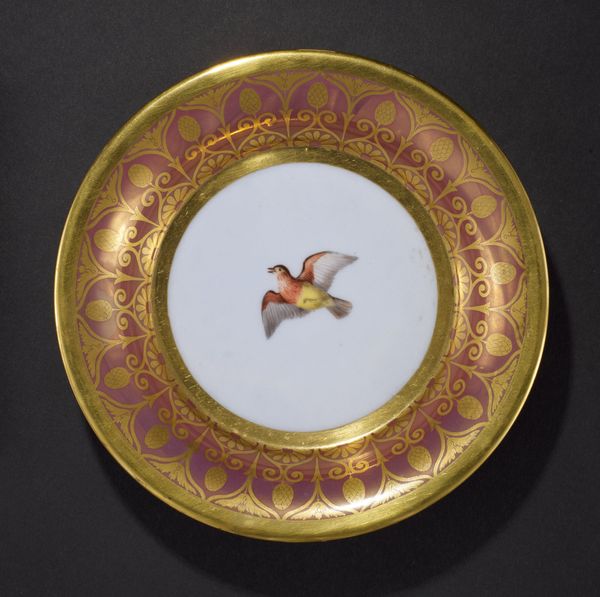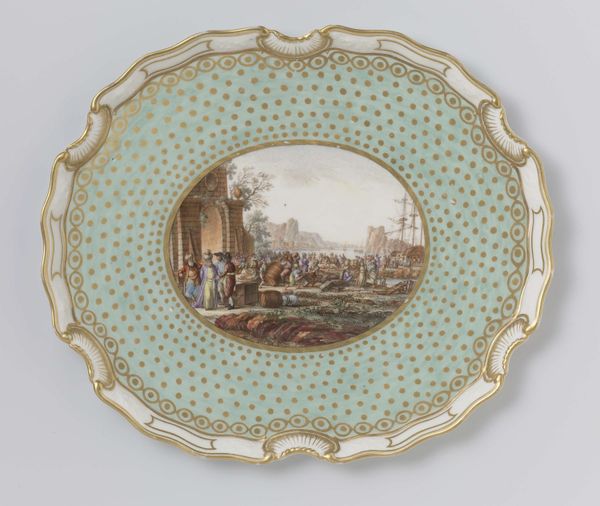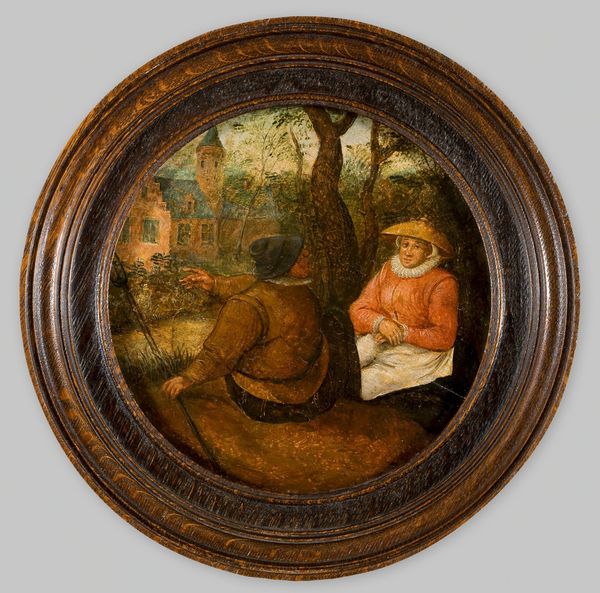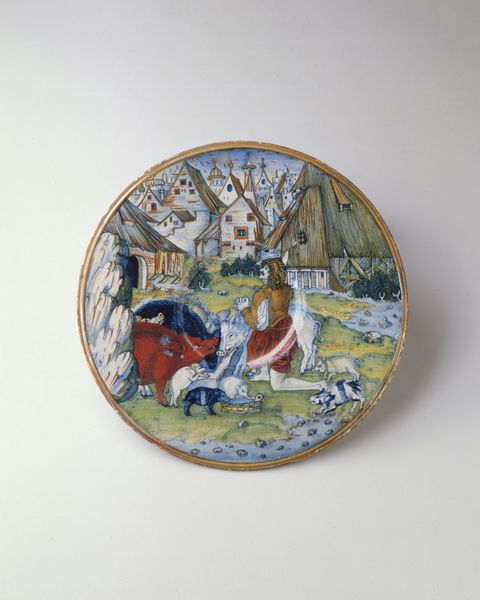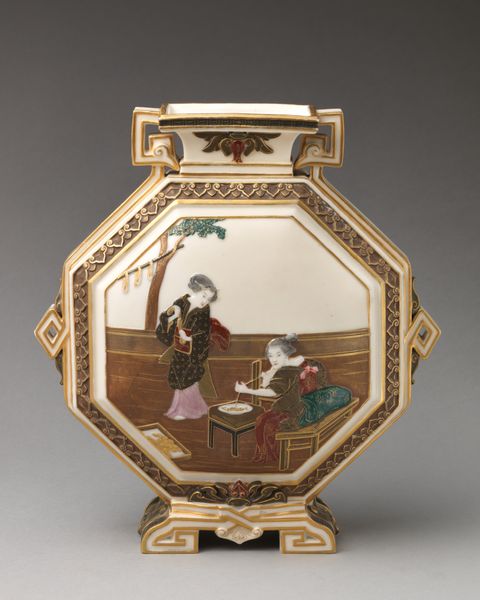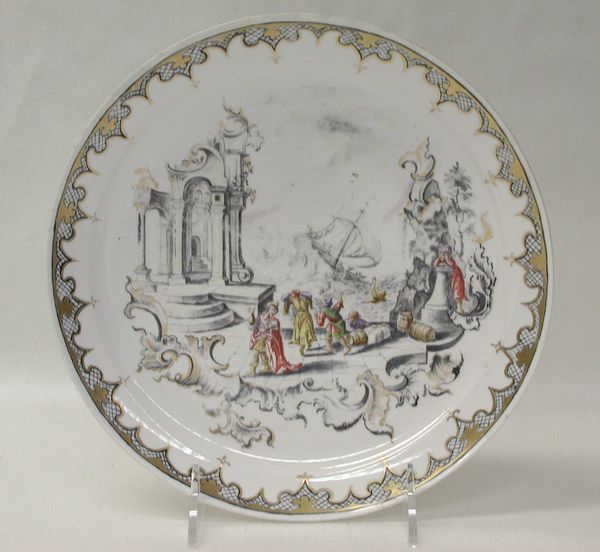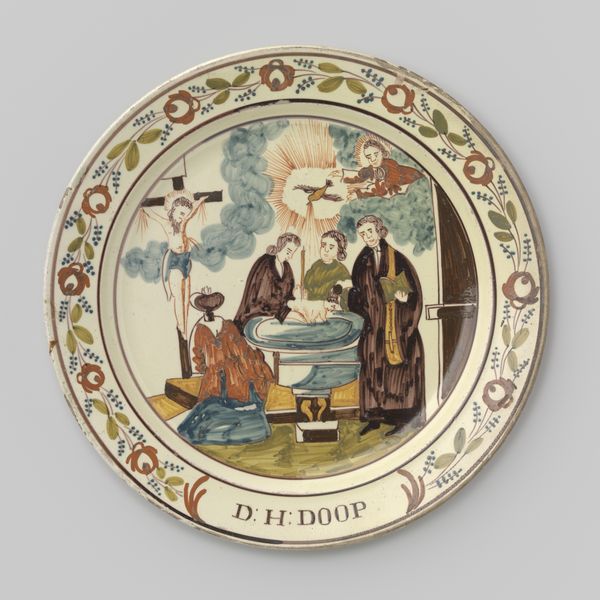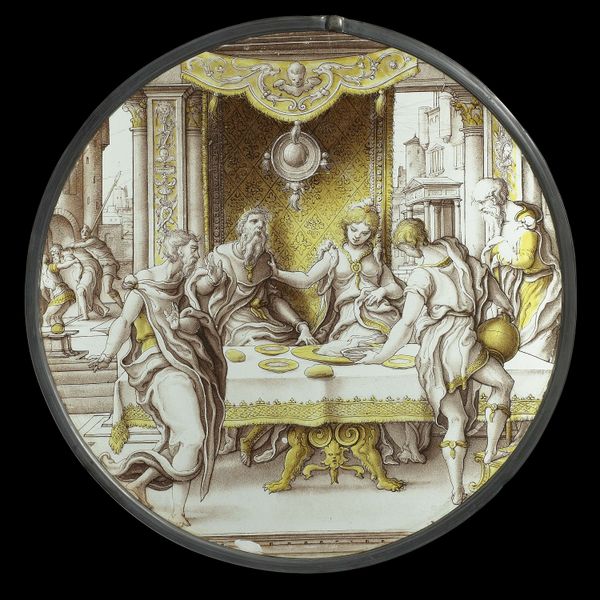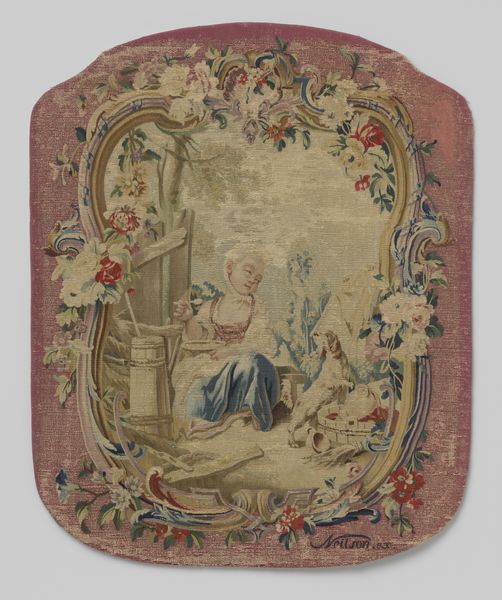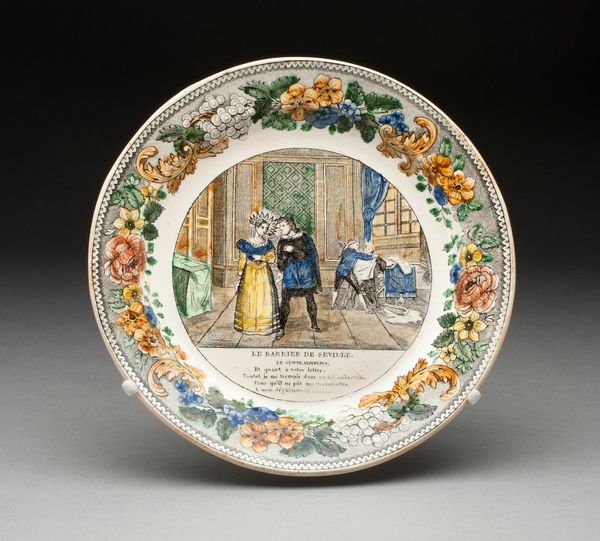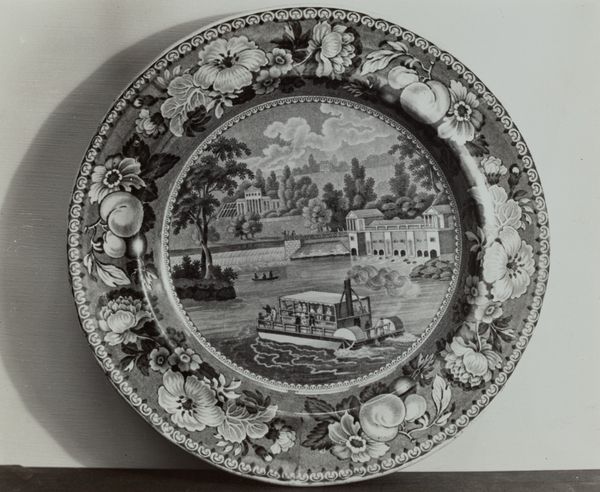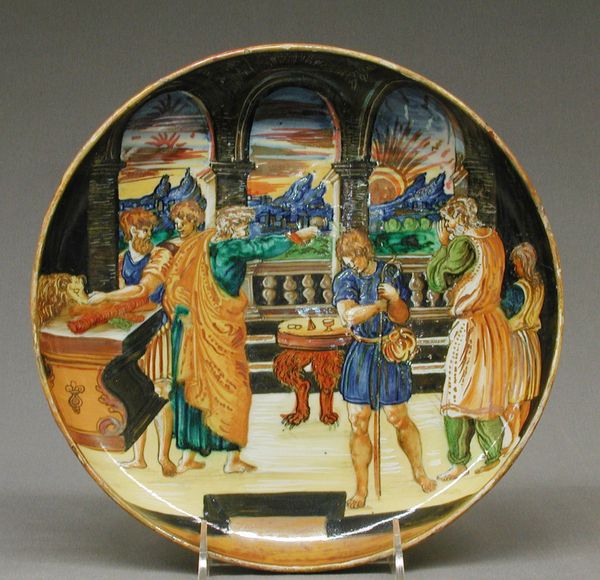
painting, print, ceramic
#
painting
# print
#
ceramic
#
traditional architecture
#
ceramic
#
genre-painting
#
history-painting
#
academic-art
#
decorative-art
#
decorative art
Dimensions: 1 x 8 7/16 x 8 7/16 in. (2.54 x 21.43 x 21.43 cm)
Copyright: Public Domain
Curator: This is a ceramic plate from around 1876 depicting an interior view of Independence Hall in Philadelphia. It's currently held at the Minneapolis Institute of Art. Editor: Well, right away I'm struck by the clash. You have a scene of serious, foundational American history rendered on what is essentially a decorative object, even potentially a piece of mass-produced tableware. Curator: Exactly! It transforms a site of weighty national symbolism into something commonplace. The plate’s imagery pulls at our collective memory, suggesting ideals of freedom, nationhood, progress. It serves as a physical reminder and perhaps an emblem of American identity. Editor: Right, but also diluting it? It’s interesting to think about the process. You start with Independence Hall, the location and symbolic core of the nation's birth. That’s translated into a two-dimensional print, which is then transferred again onto ceramic through potentially mechanized production processes. Curator: Precisely, we observe a layering of meaning, a visual echo! Observe how period figures animate the scene on the plate. Their costumes indicate a nostalgia for the revolutionary period, but the interior setting remains true to Independence Hall. There's this double vision of looking at history but experiencing the present through symbolic association. Editor: Absolutely. I wonder who exactly the makers of this piece were trying to reach. What socioeconomic group were they attempting to attract to this visual statement, given its form and function? There's this interplay of making history consumable, digestible. Curator: Yes! These ceramics likely targeted a middle-class audience eager to engage with historical narratives in an accessible format. It reflects how American history became increasingly popularized and commodified during the late 19th century, reflecting cultural trends in design. Editor: Food for thought, quite literally I suppose! Seeing the national stage on this ceramic reminds us how we make symbols and remake histories to mean something to ourselves and for our time. Curator: An intriguing blend of medium and message; now that is definitely something worth reflecting on further.
Comments
No comments
Be the first to comment and join the conversation on the ultimate creative platform.
